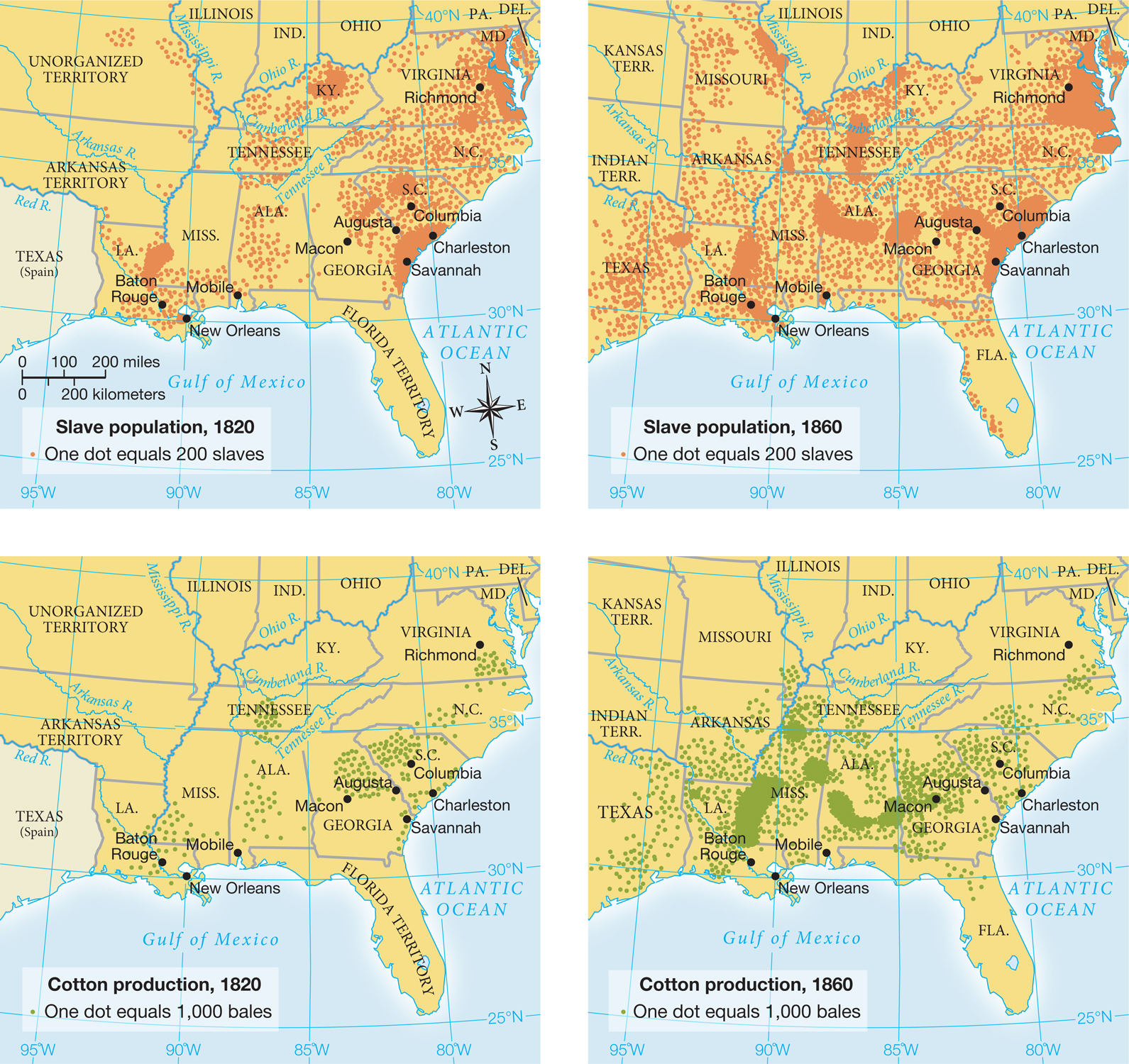The American Promise:
Printed Page 345
The American Promise Value
Edition: Printed Page 330
Chapter Chronology
Cotton Kingdom, Slave Empire

The Upper and Lower South
In the first half of the nineteenth century, millions of Americans migrated west. In the South, the stampede began after the Creek War of 1813–1814, which divested the Creek Indians of 24 million acres and initiated the government campaign to remove Indian people living east of the Mississippi River to the West. Hard-driving slaveholders seeking virgin acreage for new plantations, ambitious farmers looking for patches of cheap land for small farms, striving herders and drovers pushing their hogs and cattle toward fresh pastures—everyone felt the pull of western land.
But more than anything it was cotton that propelled Southerners westward. South of the Mason-Dixon line, climate and geography were ideally suited for the cultivation of cotton. By the 1830s, cotton fields stretched from the Atlantic seaboard to central Texas. Heavy migration led to statehood for Arkansas in 1836 and for Texas and Florida in 1845. Cotton production soared to nearly 5 million bales in 1860, when the South produced three-fourths of the world’s supply. The South—especially that tier of states from South Carolina west to Texas called the Lower South—had become the cotton kingdom (Map 13.1).

MAP ACTIVITY Map 13.1 Cotton Kingdom, Slave Empire: 1820 and 1860 As the production of cotton soared, the slave population increased dramatically. Slaves continued to toil in tobacco and rice fields, but in Alabama, Mississippi, and Texas, they increasingly worked on cotton plantations. READING THE MAP: Where was slavery most prevalent in 1820? In 1860? How did the spread of slavery compare with the spread of cotton? CONNECTIONS: How much of the world’s cotton was produced in the American South in 1860? How did the number of slaves in the American South compare with that in the rest of the world? What does this suggest about the South’s cotton kingdom?
The cotton kingdom was also a slave empire. The South’s cotton boom rested on the backs of slaves. As cotton agriculture expanded westward, whites shipped more than a million enslaved men, women, and children from the Atlantic coast across the continent in what has been called the “Second Middle Passage,” a massive deportation that dwarfed the transatlantic slave trade to North America. (See “Visualizing History.”) Victims of this brutal domestic slave trade marched hundreds of miles southwest to the Lower South, where they literally cut new plantations from the forests. Cotton, slaves, and plantations moved west together.
The slave population grew enormously. Southern slaves numbered fewer than 700,000 in 1790, about 2 million in 1830, and almost 4 million by 1860. By 1860, the South contained more slaves than all the other slave societies in the New World combined. The extraordinary growth was not the result of the importation of slaves, which the federal government outlawed in 1808. Instead, the slave population grew through natural reproduction; by midcentury, most U.S. slaves were native-born Southerners.

